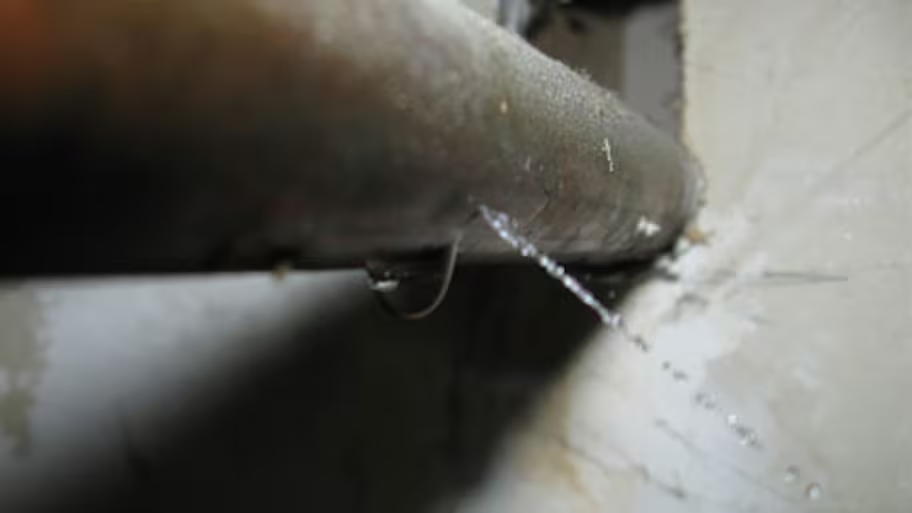The article author is making several good points related to Common Water Leaks In House overall in this great article further down.

Leaks not just trigger waste of water yet can likewise create unnecessary damages to your home as well as advertise undesirable natural growth. By comprehending and also looking for day-to-day situations that trigger leakages, you can shield your home from future leaks as well as unneeded damages.
Intruding roots
A lot of water leakages begin outside your home instead of inside it. If you see an unexpected decline in water stress, state in your tap, take some time to head out as well as analyze your lawn. You may observe wet patches or sinkholes in your yard, and that might suggest that tree origins are attacking water lines triggering water to leak out. You can have your plumber check for intrusion, especially if you have trees or hedges near your residential or commercial property.
Rusty water supply
As time passes by, your plumbing system ages as well as rust such as rust may start eating away the pipelines. This could be the source of staining or warping on your water pipes. This calls for an inspection with your plumber instantly. Think about replacing the pipelines since they are at a greater risk of deterioration than the more recent versions if our plumbing system is old.
Defective Pipeline Joints
The point at which your pipelines connect is often the weakest web link in the waterline. Pipeline joints can deteriorate gradually, causing water leaks. Sadly, the majority of pipeline joints are not easily noticeable. If you have noisy pipelines that make ticking or banging noises, especially when the warm water is switched on, your pipe joints are probably under a lot of pressure. It is suggested to have your plumber inspect your system annually.
Immediate temperature level adjustments.
Extreme temperature level modifications in our pipes can trigger them to expand and contract all of a sudden. This growth as well as contraction might trigger cracks in the pipelines, particularly if the temperature level are below freezing. It would be best if you watched on exactly how your plumbing functions. The visibility of the previously stated situations often shows a high risk.
Poor Water Connectors
At times, a leak can be caused by loose hoses as well as pipes that provide your devices. In situation of a water links leak, you might notice water running straight from the supply line or pools around your appliances.
Obstructed Drains
Clogged drains could be annoying and also inconveniencing, but they can occasionally end up causing an overflow resulting in rupture pipelines. Maintain eliminating any kind of products that might drop your drains pipes that can obstruct them to stay clear of such troubles.
All the above are sources of leaks however not all water leakages arise from plumbing leaks; some leaks might originate from roof covering leakages. All leaks should be fixed promptly to avoid water damages.
Leaks not only create waste of water however can also create unneeded damage to your residence as well as promote undesirable organic development. By looking and also recognizing for everyday scenarios that trigger leakages, you can secure your house from future leakages as well as unnecessary damages. Today, we will look at 6 leak triggers that may be triggering your pipes to leak.
At times, a leakage can be caused by loosened hoses as well as pipelines that supply your home appliances. In instance of a water connections leak, you might see water running directly from the supply line or puddles around your home appliances.
How To Check For Water Leak In Your Home
How To Check for Leaks
The average household's leaks can account for nearly 10,000 gallons of water wasted every year and ten percent of homes have leaks that waste 90 gallons or more per day. Common types of leaks found in the home are worn toilet flappers, dripping faucets, and other leaking valves. These types of leaks are often easy to fix, requiring only a few tools and hardware that can pay for themselves in water savings. Fixing easily corrected household water leaks can save homeowners about 10 percent on their water bills.
To check for leaks in your home, you first need to determine whether you're wasting water and then identify the source of the leak. Here are some tips for finding leaks:
Take a look at your water usage during a colder month, such as January or February. If a family of four exceeds 12,000 gallons per month, there are serious leaks.
Check your water meter before and after a two-hour period when no water is being used. If the meter changes at all, you probably have a leak.
Identify toilet leaks by placing a drop of food coloring in the toilet tank. If any color shows up in the bowl after 10 minutes, you have a leak. (Be sure to flush immediately after the experiment to avoid staining the tank.)
Examine faucet gaskets and pipe fittings for any water on the outside of the pipe to check for surface leaks.
Undetected water leaks can happen without the home or business owner even realizing. If you suspect a water leak, but not able to find the source. It is time to contact a professional water leak detection service, The Leak Doctor.
How To Find a Water Leak In Your Home
https://www.leakdoctor.com/blog/How-To-Check-For-Water-Leak-In-Your-Home_AE197.html

We had been shown that write-up on Common Water Leaks In House through an acquaintance on another web address. Sharing is caring. Helping people is fun. Many thanks for your time. Don't forget to check our blog back soon.
Save time, dial!